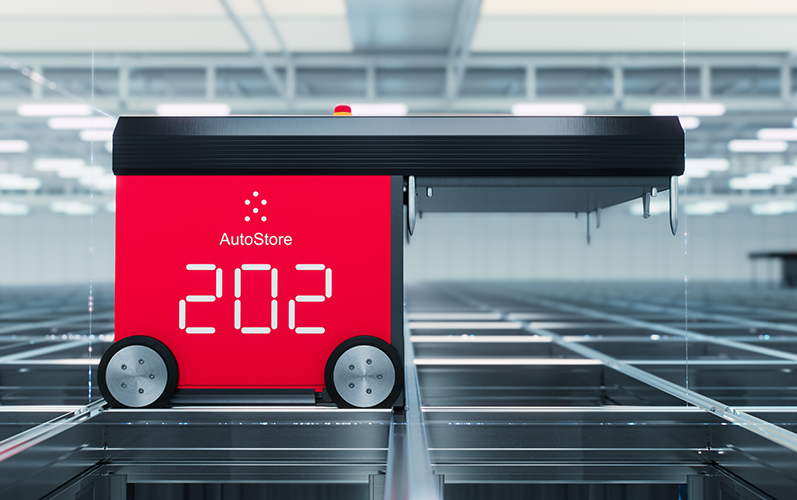What is the optimal size for an automated facility and can it be flexible?
This blog post is part 1 of 7, in a series that will discuss each key point from the StrongPoint webinar “Top 7 things to consider when doing grocery automation“.

One of our customers’ main concerns is space. That’s understandable: space is expensive, and thus every square metre of floor and storage must be optimised. Too much space and processes will be inefficient due to the greater distances, and you will be paying for capacity you don’t need. Too little space and you will be unable to scale at peak times due to lack of capacity, and your processes will also become inefficient due to space constraints. It’s a careful balancing act.
In short, it depends on your strategy as a retailer, as well as factors such as the competitiveness of your geographical market and your stores’ physical limitations. To help you determine the optimal size and scalability of your automation facility, we offer the following five considerations.
1. Scalability
Every e-commerce operation should be designed to scale efficiently. This means having the capability to handle peaks and troughs in inventory intake, order fulfillment and customer service, without significant disruptions or compromises in quality.
2. Cost Efficiency
It’s essential that you achieve the right balance of cost to revenue. This ranges from the capital needed to invest in a new solution to the cost of maintenance. Conversely, you don’t want to invest in a large facility with a small automation solution that doesn’t generate the throughput necessary to justify the investment.
3. Customer Experience
Of equal importance when considering the size of an automated e-commerce operation is customer experience. The consumer should be considered at all steps of the process. Automation can enhance efficiency, speed up order processing and reduce errors, resulting in improved customer satisfaction, but it should never come at a cost to the consumer, be it time, damages caused by automation, technical hiccups or a steep learning curve.
You have to ask what kind of experience you are trying to elicit from your customers. Is it to increase interest in one-hour order fulfillment? A smooth and painless weekly shopping excursion? What is your core customer base, and what are their habits? The answers will affect the size and nature of your automation.
4. Inventory Management
A robust inventory management system is essential to anything larger than a local food shop. Such a system involves maintenance of optimal inventory levels to meet customer demand while minimising excess stock and associated costs.
You can’t meet efficiency goals in a sprawling warehouse with few SKUs, and likewise you can’t scale up beyond the limits of a small store’s backroom floorspace. Management of stock through careful inventory tracking means you’re not overloaded with slow-moving products when you need to take in seasonal items, and similarly that you’re not lacking your most popular items come weekend. In either case, your automation system won’t be employed in the best possible way. Again, you need to understand your consumers, which is just a matter of careful data analysis.
5. Operational Flexibility
The optimal e-commerce operation should adapt to market changes and should be flexible enough to quickly introduce new products or services and accommodate seasonal or even weekly or daily fluctuations in demand.
For example, some retailers consider using conveyors when converting the back of their store to an automated facility, but they are often not cost-effective, are rigid in design and do not make the best use of space. Other technologies such as autonomous mobile robots (AMRs) lend themselves better to scaling. However, in a large CFC where orders can move hundreds of meters, conveyors might become the optimal technology. It’s all about your needs and how your operation can be tailored to meet those goals.
This is just a primer, but we hope this overview answers some of your questions. If it stirred up more thoughts and questions, please contact us so we can chat about your needs!
Read more about automated micro fulfilment centres

Micro-Fulfillment Centers (MFC)
Store up to 4x more items in the same space, and have them retrieved by robots. by As an AutoStore partner, StrongPoint offers hyper-efficient micro-fulfillment solutions tailor-made for grocery retailers and other industries. But there’s more: StrongPoint will soon be the first in the world to install an AutoStore grid with a frozen zone for automated picking of frozen items.
Learn more